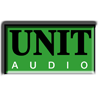Review: Brian Scherman Reviews a New Unit Analog Summing Mixer

One Track Mind
This blog post is about commitment. Not the type my mother is always harping about, but commitment to a sound. Just like in life, if we leave ourselves infinite possibilities, we're left floating with indecision, and miss opportunities to create something truly great. This idea came up recently as I move from tracking to the mixing phase with the new hard rock band I've been working with called Dangerhole.
When I pulled up a song from the record, I found myself scrolling through lots of tracks. It's typical to have multiple microphones capturing one source (for example, a mic on the inside of the bass drum to capture the click of the beater, and a mic outside to capture the low end sustain of the resonant head), but this means that recording a three-piece band can end up being thirty-plus tracks. In modern production this could even be considered spartan.
I knew that to have the best chance at a great mix, I had to get my head out of the details and into the bigger "picture" of how the track would sound as a whole. This would mean simplifying the session so that when I wanted the kick drum louder, I would be turning up one track called "Kick, " versus balancing an inside/outside mic. This would allow me to flow easier through the mix process and focus on what's really important: How does the song feel? Does it have enough impact? etc.
Though I could have used the features in my DAW to print these tracks together, I wanted to take advantage of our studio's great selection of outboard analog equipment, so I turned to a process known as analog summing. The basics of analog summing are that you send audio out from the computer into a box that "sums" it all together, then re-record that summed audio back into the computer.
This basic idea is a decades-old process for mixing music. Traditionally mixing a record meant sending tracks from analog tape through a console, and all of these tracks were summed by the console then re-recorded. Tape got replaced by digital recorders and computers, and in more recent decades, many have turned to mixing entirely inside the computer ("inside the box" is common parlance).The purpose of this post is not to argue at all which process is "better" as many classic records have been made both on only analog equipment and created entirely inside a computer. Each is a tool with its own sets of benefits and challenges.
The beauty of analog summing is that it allows one to take advantage of both processes, using the computer for what it's excellent at (editing, recall, unlimited tracks) and using analog equipment for what it's best at (immediacy, tone, headroom). There are many excellent boxes on the market for summing audio, but I turned to Unit Audio'scNew Unit.
Unit Audio is a small company run by Terry Auger out in Nashville, TN. I chose their New Unit, which allows for sixteen inputs of audio, and the first two can be switched from left-and-right to center. This is a great feature, because without it, if I sent my kick to input one and my snare to input two, the kick would come out the left speaker and the snare out the right speaker. Flip two switches on the front panel of the box and they both land in the center.
Unit Audio's summing boxes are passive, meaning that when you send a bunch of tracks to the box, they get summed together but are much quieter than when they started. You use a microphone preamp to bring these back up to an appropriate level when you're recording the result back into your session. An advantage of this, is that one can use different preamps to "flavor" their mix, since all preamps inherently have a color based on their components. Man Made has several high quality preamps, and after some experimentation I settled on our pair of Avalon 737s. They have a sound to them which I would describe as "classy." Might seem counter-intuitive for a hard rock record, but to my ears this allows all of the distorted guitars and hard hitting drums to be heard clearly and distinctly.
So after connecting all of the components, I set about mixing down my tracks, and started printing stems (a stem for kick, snare, toms, etc), and now my thirty-plus track session has become sixteen. Besides the benefits of freeing up CPU power, it's also just so much easier to see all the elements of these songs at a glance, and now I can commit to what's really important: mixing a great song.


